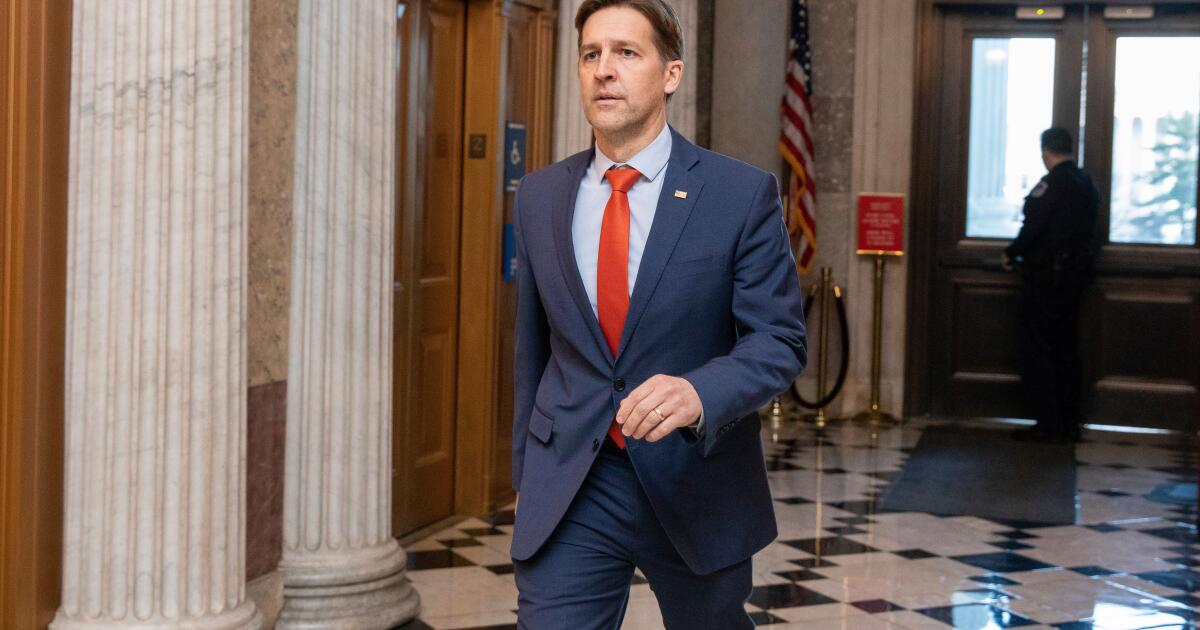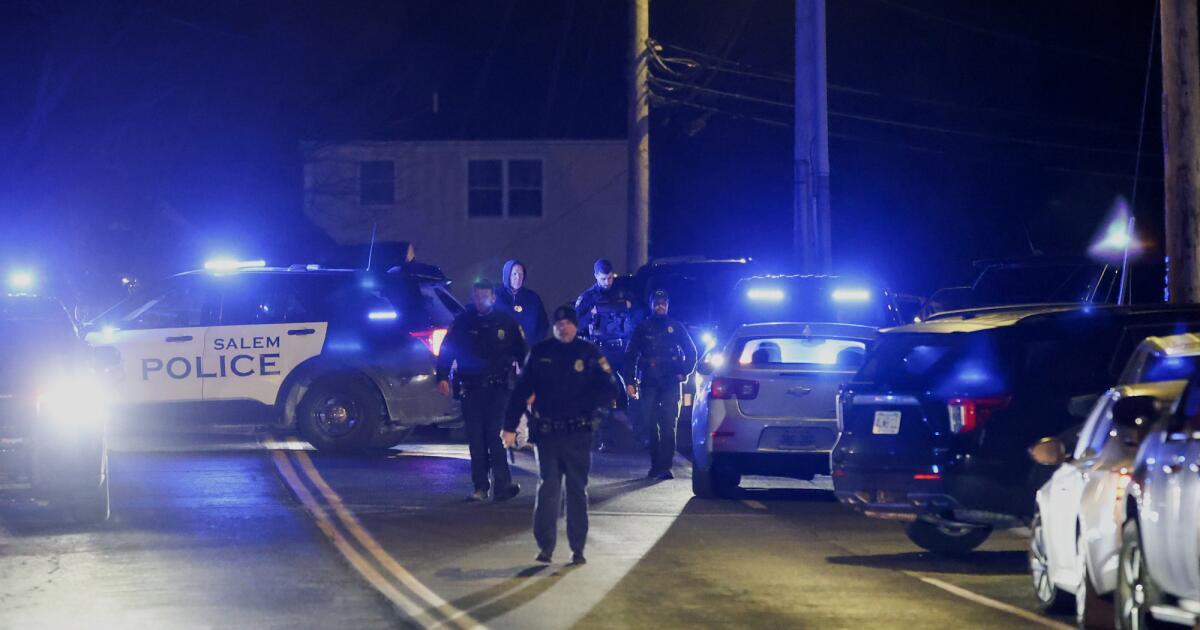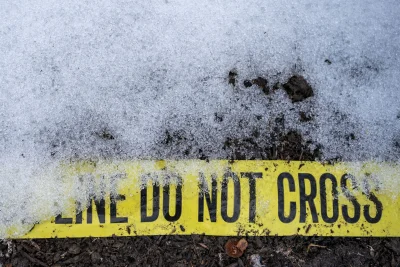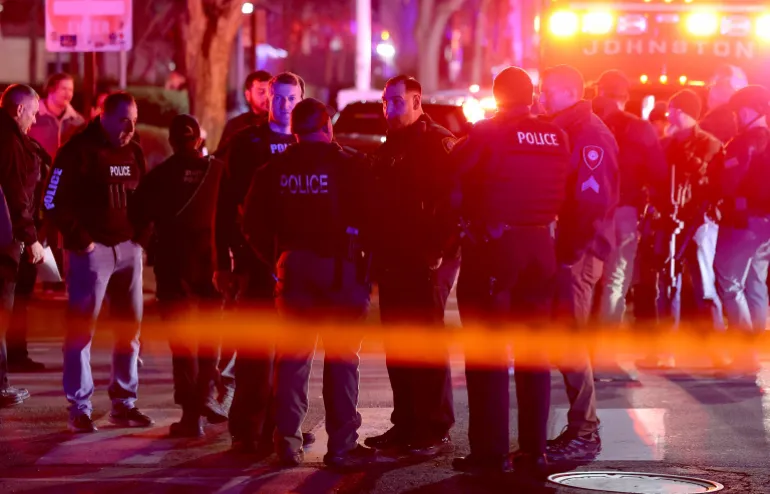Nine former Department of Justice attorneys assigned to investigate alleged antisemitism at the University of California described chaotic and rushed directives from the Trump administration and told The Times they felt pressured to conclude that campuses had violated the civil rights of Jewish students and staff.
In interviews over several weeks, the career attorneys — who together served dozens of years — said they were given the instructions at the onset of the investigations. All nine attorneys resigned during the course of their UC assignments, some concerned that they were being asked to violate ethical standards.
“Initially we were told we only had 30 days to come up with a reason to be ready to sue UC,” said Ejaz Baluch, a former senior trial attorney who was assigned to investigate whether Jewish UCLA faculty and staff faced discrimination on campus that the university did not properly address. “It shows just how unserious this exercise was. It was not about trying to find out what really happened.”
In spring 2024, increasingly tumultuous protests over Israel’s war in Gaza racked UCLA. Jewish students and faculty reported “broad-based perceptions of antisemitic and anti-Israeli bias on campus,” a UCLA antisemitism task force found. A group later sued, charging that UCLA violated their civil rights, and won millions of dollars and concessions in a settlement.
UCLA avoided trial, but the suit — along with articles from conservative websites such as the Washington Free Beacon — formed a basis for the UC investigations, the former DOJ lawyers said.
“UCLA came the closest to having possibly broken the law in how it responded or treated civil rights complaints from Jewish employees,” Baluch said. “But we just did not have enough information from our investigation to warrant suing UCLA.”
“To me, it’s even clearer now that it became a fraudulent and sham investigation,” another lawyer said.
A DOJ spokesperson did not respond to a request for comment. When it announced findings against UCLA in late July, Assistant Atty. Gen. Harmeet K. Dhillon — the DOJ civil rights chief — said the campus “failed to take timely and appropriate action in response to credible claims of harm and hostility on its campus.” Dhillon said there was a “clear violation of our federal civil rights laws.” Atty. Gen. Pam Bondi said UCLA would “pay a heavy price.”
The former DOJ attorneys’ description of their Trump administration work offers a rare view inside the government’s UC probe. For months, university officials have said little publicly about their ongoing talks with the DOJ. Their strategy has been to tread cautiously and negotiate an out-of-court end to the investigations and financial threats — without further jeopardizing the $17.5 billion in federal funds UC receives.
Four attorneys said they were particularly troubled by two matters. First, they were asked to write up a “j-memo” — a justification memorandum — that explained why UC should face a lawsuit “before we even knew the facts,” one attorney said.
“Then there was the PR campaign,” the attorney said, referring to announcements beginning with a Feb. 28, 2025, press release saying investigators would be visiting UCLA, UC Berkeley, USC and seven other universities nationwide because the campuses “have experienced antisemitic incidents since October 2023.”
“Never before in my time across multiple presidential administrations did we send out press releases essentially saying workplaces or colleges were guilty of discrimination before finding out if they really were,” said one attorney, who requested anonymity for fear of retaliation.
Jen Swedish, a former deputy chief on the employment discrimination team who worked on the UCLA case, said “virtually everything about the UC investigation was atypical.”
“The political appointees essentially determined the outcome almost before the investigation had even started,” said Swedish, referring to Trump administration officials who declared publicly that punishing colleges for antisemitism would be a priority. She resigned in May.
The lawyers spoke out because their formal connections to the DOJ recently ended. Many said they believed the Trump administration had compromised the integrity of the department with what they viewed as aggressive, politically motivated actions against UC and other elite U.S. campuses.
“I think there were absolutely Jewish people on campuses that faced legitimate discrimination. But the way we were pushed so hard to investigate, it was clear to so many of us that this was a political hit job that actually would end up not helping anyone,” said one attorney who worked on UC Davis and UCLA and interviewed students.
In a statement, a UC spokesperson said, “While we cannot speak to the DOJ’s practices, UC will continue to act in good faith and in the best interests of our students, staff, faculty, and patients. Our focus is on solutions that keep UC strong for Californians and Americans.”
The government has not sued UC.
But in August, the DOJ demanded that the university pay a $1.2-billion fine and agree to sweeping, conservative-leaning campus policy changes to settle federal antisemitism accusations. In exchange, the Trump administration would restore $584 million in frozen grant funding. At the time, Gov. Gavin Newsom called the proposal “extortion.”
Last month, after UC faculty independently sued, U.S. District Judge Rita F. Lin ruled that the “coercive and retaliatory” proposal violated the 1st Amendment. Lin blocked the fine and the demands for deep campus changes.
“Agency officials, as well as the president and vice president, have repeatedly and publicly announced a playbook of initiating civil rights investigations of preeminent universities to justify cutting off federal funding, with the goal of bringing universities to their knees and forcing them to change their ideological tune,” Lin said.
Her ruling does not preclude UC from negotiating with the administration or reaching other agreements with Trump.
Protests roiled campuses in spring 2024
The federal investigations largely focused on the tumultuous pro-Palestinian campus protests that erupted at UC campuses. On April 30, 2024, a pro-Israel vigilante group attacked a UCLA encampment, resulting in injuries to student and faculty activists. Police failed to bring the situation under control for hours — a melee former Chancellor Gene Block called a “dark chapter” in the university’s history.
During the 2023-24 UC protests, some Jewish students and faculty described hostile climates and formal antisemitism complaints to the schools increased. Some Jews said they faced harassment for being Zionists. Others said they encountered symbols and chants at protests and encampments, such as “From the river to the sea, Palestine will be free,” which they viewed as antisemitic. Jews were also among the leading encampment activists.
In June 2024, Jewish UCLA students and faculty sued UC, saying the encampment blocked them from accessing Dickson Court and Royce Quad. The four blamed the university for anti-Jewish discrimination, saying it enabled pro-Palestinian activists to protest. On July 29, 2025, UC agreed to pay $6.45 million to settle the federal suit.
In response to the demonstrations and suit, UC overhauled its free speech policies, banning protests that aren’t preapproved from vast portions of campus. It said it would strictly enforce existing bans on overnight encampments and the use of masks to hide identity while breaking the law, and agreed to not prohibit campus access to Jews and other legally protected groups.
Inside the investigations
The nine former DOJ lawyers worked between January and June researching whether UC campuses mishandled complaints of antisemitism filed by Jewish students, faculty and staff tied to pro-Palestinian encampments. They were involved with two areas under the DOJ’s Civil Rights Division — employment litigation and educational opportunities — tasked with looking into potential discrimination faced by UC employees and students.
The attorneys described an at times rushed process that concentrated legal staffing on probing antisemitism at UC campuses, to the detriment of other discrimination cases focused on racial minorities and people who are disabled.
At one point, attorneys said, more than half of the dozens of lawyers in the employment litigation section were assigned solely or nearly exclusively to UC campuses, with some told specifically to research the UCLA David Geffen School of Medicine and other campus divisions. As lawyers begin to quit, the attorneys said, additional staff was brought in from other DOJ teams — those focused on tax law and immigrant employment law.
When five lawyers in the mid-spring reported minimal findings at Berkeley, Davis and San Francisco campuses, they were reassigned to UCLA.
“It was like UCLA was the crown jewel among public universities that the Trump administration wanted to ‘get,’ similar to Harvard for privates,” said another attorney, who requested anonymity because they feared retaliation for speaking out. “There were meetings where managers — who were career employees like us — would convey that political appointees and even the White House wanted us all on UCLA.”
Dena Robinson, a former senior trial attorney, investigated Berkeley, Davis and Los Angeles campuses.
“I was someone who volunteered on my own to join the investigation and I did so because of some of my lived experience. I’m a Black woman. I’m also Jewish,” she said. But she described concerns about fast and shifting deadlines. “And I am highly skeptical of whether this administration actually cares about Jewish people or antisemitism.”
Lawyers described similar views and patterns in the Educational Opportunities Section, where UC investigations were concurrently taking place.
A 10th attorney, Amanda Huckins, said she resigned from that section to avoid being assigned to UC.
“I did not want to be part of a team where I’m asked to make arguments that don’t comport with the law and existing legal precedent,” she said.
Huckins had been away from the job for a little more than two months when she read findings the DOJ released July 29 saying that UCLA acted with “deliberate indifference” to Jewish students and employees and threatened to sue the university if it did not come to a settlement.
In those findings, the DOJ said, “Jewish and Israeli students at UCLA were subjected to severe, pervasive, and objectively offensive harassment that created a hostile environment by members of the encampment.” As evidence, it cited 11 complaints from Jewish or Israeli students regarding discrimination between April 25 and May 1, 2024.
It was “as if they only talked to particular students and used public documents like media reports,” Huckins said, adding that the evidence publicly presented seemed thin. In a “normal investigation,” attorneys research “different layers of document and data requests and interviews at every level of the university system.” Those investigations, she said, can take at least a year, if not longer.
What investigators encountered
Attorneys described site visits at several UC campuses over the spring, including meetings with campus administrators, civil rights officers, police chiefs and UC lawyers who attended interviews — including at least one with UCLA Chancellor Julio Frenk.
The lawyers said UC leaders were cooperative and shared campus policies about how civil rights complaints are handled as well as information detailing the way specific cases were treated, such as those of faculty who said they faced harassment.
“There were thousands and thousands of pages of documents and many interviews,” said Baluch, referring to Berkeley, Davis and UCLA. “There may have been harassment here and there, but there was not a lot that rose to the level of the university violating federal law, which is a pretty high bar.”
“We identified certain incidents at Berkeley and at Davis that were kind of flash points. There were a couple of protests that seemed to get out of hand. There were the encampments. There was graffiti. But we just did not see a really hostile work environment,” said another attorney who visited those campuses. “And if there was a hostile environment, it seemed to have been remediated by the end of 2024 or even May or June for that matter.”
However, at UCLA, Baluch said he and team members found “problems with the complaint system and that some of the professors were genuinely harassed and to such a severe level that it violates Title VII.” Eventually, he said “we successfully convinced the front office that we should only be going after UCLA.”
Where UC and Trump administration stand today
When Harvard faced major grant freezes and civil rights violation findings, it sued the Trump administration. UC has so far opted against going to court — and is willing to engage in “dialogue” to settle ongoing investigations and threats.
“Our priorities are clear: protect UC’s ability to educate students, conduct research for the benefit of California and the nation, and provide high-quality health care,” said UC spokesperson Rachel Zaentz. “We will engage in good-faith dialogue, but we will not accept any outcome that cripples UC’s core mission or undermines taxpayer investments.”
The calculation, according to UC sources, is simple. They want to avoid a head-on conflict with Trump because UC has too much federal money on the line. They point to Harvard — which suffered major grant losses and federal restrictions on its patents and ability to enroll international students after publicly challenging the president.
“Our strategy before was to lay low and avoid Trump any way we could,” said a UC official, who was not authorized to speak on the record. “After the UCLA grants were pulled and the settlement offer came in, the tactic shifted to ‘playing nice’” without agreeing to its terms.
In public remarks to the board of regents last month at UCLA, UC President James B. Milliken said “the stakes are enormous” and presented data on funding challenges: Under Trump, more than 1,600 federal grants have been cut. About 400 grants worth $230 million remained suspended after faculty court wins.
UC “is still facing a potential loss of more than a billion dollars in federal research funding,” Milliken said.
“The coming months may require even tougher choices across the university,” he said.
No information about a possible UC-Trump settlement has been released. But some former DOJ lawyers said they believe a settlement is inevitable.
“It’s devastating that these institutions are feeling pressured and bullied into these agreements,” said Huckins, speaking of deals with Columbia, Brown, Cornell and other campuses. “I would love it if more schools would stand up to the administration … I recognize that they’re in a hard spot.”
To Baluch, who worked on the UCLA case, it appeared that the DOJ had the upper hand.
“Cutting grants is a huge hit to a university. And the billion-dollars fine is a lot. I see why these universities feel backed into a corner to settle,” he said. “The threats, they are working.”
















